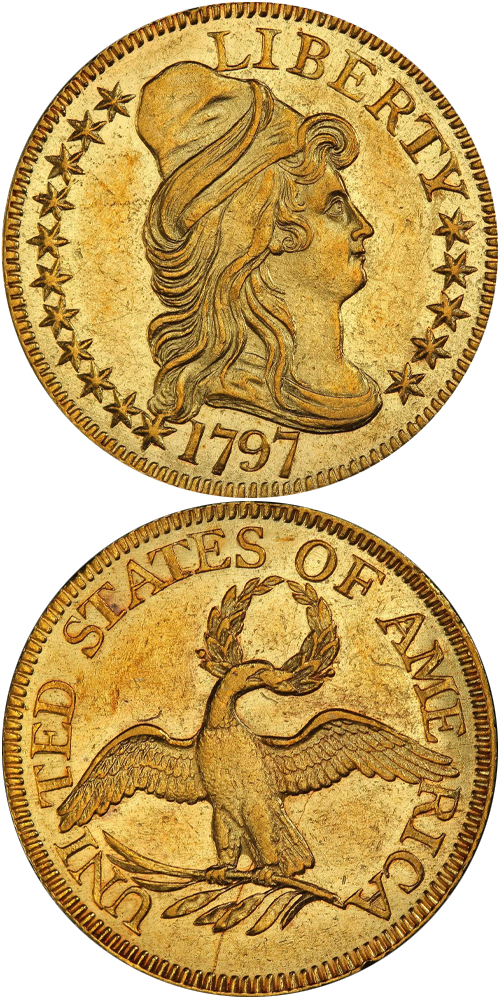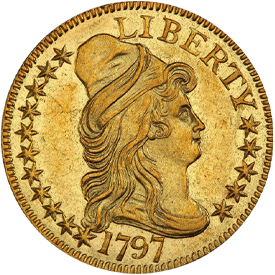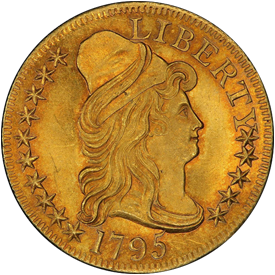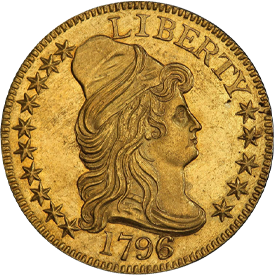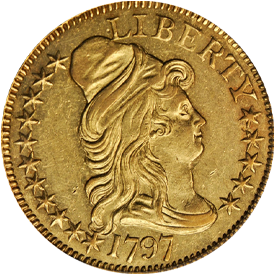Designed by: Robert Scot
Issue Dates: 1795-1798
Composition: 91.67% gold, 8.33% copper
Diameter: 25 mm
Weight: 8.75 grams (135.03 grains)
Edge: Reeded
Business Strike Mintage: 18,512
Proof Mintage: None
Believed to have been designed by Robert Scot, the first half eagle, representing the first United States gold coin actually put in circulation, is of the design designated by collectors today as the Capped Bust to Right obverse with Small Eagle reverse. The obverse depicts Miss Liberty, wearing a cloth cap, facing right, with LIBERTY to the right above and the date below. The star count arrangement is typically 10 to the left and five to the right, but one variety of 1797 has 16 stars arranged 11 to the left and five to the right. The reverse, believed to have been copied from an ancient cameo, shows an eagle perched on a palm branch holding a wreath aloft in its beak. The inscription UNITED STATES OF AMERICA surrounds. There is no mark or indication of value on the piece. At the time, gold coins were valued in the channels of commerce by their weight and metallic content. Examples were produced from 1795 through 1798, with the last year being a major rarity in the series – a coin of which fewer than a dozen are known to exist.
Several hundred examples survive of various 1795-1798 half eagles with the Small Eagle reverse. Most of these bear the date of the first year of issue, 1795. Most surviving specimens are in grades from Very Fine through AU, but over the years a number have been designated as Uncirculated. Among 1795 half eagles, AU and Uncirculated coins often possess prooflike surfaces.
